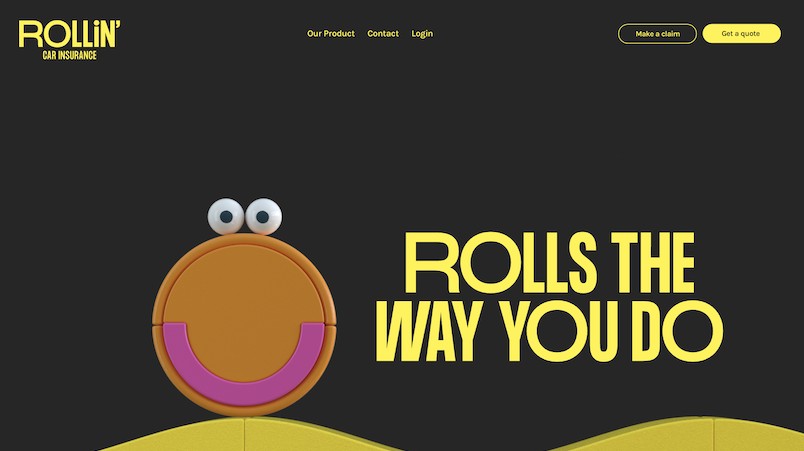In the competitive world of insurance, ownership structures often reveal much about a company’s strategic direction, financial health, and market positioning. Rollin’ Insurance, a notable player in the industry, is no exception. Understanding who owns Rollin‘ Insurance provides insights into its operational strategies and future prospects.
Rollin’ Insurance: An Overview
Rollin’ Insurance, founded in [year], has established itself as a reliable provider of various insurance products, including auto, home, and life insurance. The company has garnered a reputation for customer-centric policies and innovative solutions that cater to a diverse clientele.

Ownership Structure
The ownership of Rollin’ Insurance can be categorized into several segments:
- Institutional Investors: A significant portion of Rollin’ Insurance’s shares is held by institutional investors. These entities include mutual funds, pension funds, and insurance companies themselves. Institutional investors are typically drawn to Rollin’ Insurance due to its steady performance, growth potential, and robust financials.
- Founders and Executives: The founders and executive team of Rollin’ Insurance maintain a substantial stake in the company. This ownership not only signifies their commitment to the firm’s success but also aligns their interests with those of other shareholders. It is common for key executives to hold shares as part of their compensation packages, incentivizing them to drive long-term growth.
- Public Shareholders: Rollin’ Insurance may also have a portion of its shares traded publicly on stock exchanges. Public shareholders include individual investors, small investment firms, and other entities that purchase shares through the stock market. The public ownership provides liquidity and a broader investor base, contributing to the company’s market valuation.
- Private Equity Firms: In some cases, private equity firms may hold a stake in Rollin’ Insurance. These firms often invest in companies with high growth potential, providing capital and strategic guidance in exchange for equity. Private equity involvement can lead to significant changes in the company’s management and strategic direction, aiming for substantial returns on investment.
- Strategic Partners: Rollin’ Insurance might also have strategic partners who own equity in the company. These partners could include other insurance firms, financial services companies, or conglomerates that see synergistic benefits in collaborating with Rollin’ Insurance. Such partnerships can enhance the company’s market reach, product offerings, and technological capabilities.
Impact of Ownership on Business Strategy
The diverse ownership structure of Rollin’ Insurance influences its business strategy in several ways:
- Institutional Influence: Institutional investors often push for steady returns and risk management. Their influence can lead to conservative financial strategies and a focus on long-term stability.
- Executive Alignment: The ownership stake held by founders and executives ensures that the leadership is highly motivated to achieve the company’s goals. This alignment can drive innovation, customer satisfaction, and overall company growth.
- Public Accountability: Being publicly traded subjects Rollin’ Insurance to regulatory scrutiny and market pressures. Transparency and accountability become crucial, influencing corporate governance and ethical practices.
- Private Equity Impact: If private equity firms are involved, their focus on maximizing returns can lead to aggressive growth strategies, restructuring, or even preparing the company for a future sale or public offering.
- Strategic Collaborations: Ownership by strategic partners can foster collaborations that enhance product development, market expansion, and competitive advantage.

1. Who are the primary owners of Rollin’ Insurance?
The primary owners of Rollin’ Insurance include institutional investors, the company’s founders and executive team, public shareholders, private equity firms, and strategic partners. This diverse ownership base helps to shape the company’s strategic direction and operational efficiency.
2. How much of Rollin’ Insurance is owned by institutional investors?
Institutional investors hold a significant portion of Rollin’ Insurance’s shares. These investors include mutual funds, pension funds, and other large financial entities attracted to the company’s steady performance and growth potential.
3. Do the founders and executives of Rollin’ Insurance own shares in the company?
Yes, the founders and executive team maintain substantial ownership stakes in Rollin’ Insurance. This aligns their interests with those of other shareholders and incentivizes them to drive the company’s long-term growth and success.
4. Is Rollin’ Insurance a publicly traded company?
Rollin’ Insurance may have a portion of its shares traded on public stock exchanges, allowing individual investors, small investment firms, and other entities to purchase shares. Public ownership contributes to the company’s liquidity and broader investor base.
5. Are there any private equity firms involved in Rollin’ Insurance?
Private equity firms might hold a stake in Rollin’ Insurance. These firms invest in companies with high growth potential, providing capital and strategic guidance in exchange for equity. Their involvement can lead to significant changes in management and strategy.
6. Who are the strategic partners of Rollin’ Insurance?
Strategic partners owning equity in Rollin’ Insurance could include other insurance firms, financial services companies, or conglomerates. These partnerships offer synergistic benefits, enhancing the company’s market reach, product offerings, and technological capabilities.
7. How does the ownership structure affect Rollin’ Insurance’s business strategy?
The diverse ownership structure influences Rollin’ Insurance’s business strategy in various ways:
- Institutional Influence: Emphasizes steady returns and risk management.
- Executive Alignment: Ensures leadership is motivated to achieve company goals.
- Public Accountability: Promotes transparency and accountability due to regulatory scrutiny and market pressures.
- Private Equity Impact: Drives aggressive growth strategies and potential restructuring.
- Strategic Collaborations: Enhances product development and market expansion through partnerships.
8. How can I invest in Rollin’ Insurance?
If Rollin’ Insurance is publicly traded, you can invest by purchasing shares through a brokerage account. If it is privately held, investment opportunities may be limited to private equity firms or strategic partners.
9. What are the benefits of Rollin’ Insurance’s diverse ownership?
The diverse ownership base provides stability, growth potential, and strategic advantages. It ensures that various stakeholders with different expertise and resources contribute to the company’s success.
10. Where can I find more information about Rollin’ Insurance’s ownership and financial performance?
For more detailed information, you can refer to Rollin’ Insurance’s official website, annual reports, and filings with regulatory bodies like the Securities and Exchange Commission (SEC), if applicable.
Conclusion
Rollin’ Insurance’s ownership structure is a mosaic of institutional investors, company executives, public shareholders, private equity firms, and strategic partners. Each segment plays a vital role in shaping the company’s strategic direction and operational efficiency. Understanding who owns Rollin’ Insurance provides a comprehensive view of its potential for growth and resilience in the dynamic insurance industry.

